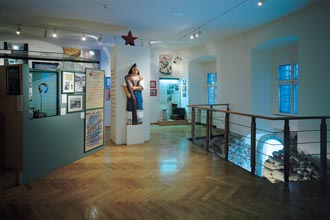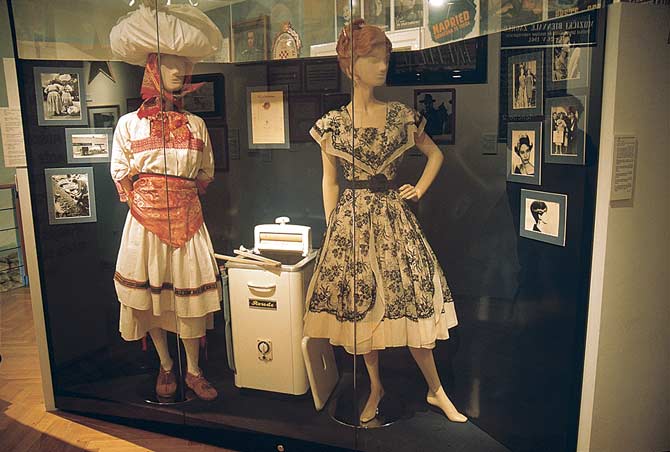Permanent Display 42. In Socialist Reality
 Zagreb experienced May 1945 mute and in terror. At the beginning of the month, great columns of ISC officials, Croatian army units, German soldiers and numerous civilians left the city. On May 8, Yugoslav Army units entered the city in smallish columns.
Zagreb experienced May 1945 mute and in terror. At the beginning of the month, great columns of ISC officials, Croatian army units, German soldiers and numerous civilians left the city. On May 8, Yugoslav Army units entered the city in smallish columns.
The communist transformation of society began at once, with the help of the National Front, making itself seen in changes to the city views, the placing of the five pointed star on many public buildings, and the removal of the monument to the national hero Ban Josip Jelačić.
Accompanied by the slogan No rest while renewal is going on, the building of numerous factories and municipal facilities started. The population lived in difficult circumstances off UNRRA aid, which at least partially alleviated the consequences of the war.
Jail sentences, shootings and trials were everyday events. The totalitarianism of the communist regime was symbolically confirmed in Zagreb by the staged trial of the Archbishop of Zagreb, Cardinal Alozije Stepinac, who was sentenced to sixteen years of hard labour in spite of being innocent.
In the first post-war period, alongside other great industrial plants, RIZ (Radio Industry of Zagreb) was founded, which expanded its operations when Zagreb Television was set up in 1956. The time was coming when these electronic and acoustic devices were an obligatory part of the equipment of every home, and when people were ever more interested in entertainment.
As soon as the discipline of socialist realism began to relax, attempts were made to establish connections with the rest of the world. Exhibitions of world-famed artists were organised (Henry Moore, 1958, and Pablo Picasso); the international Musical Biennale was founded (1961); and New Tendencies, an international art movement, started in 1961. All of these stimulated new, creative intellectual ferments during the sixties.

The demographic growth of Zagreb was accompanied by a change in the structure of the population, linked with sudden industrial growth and an influx of people from the countryside into the capital. The new economic strength meant it was possible to put into practice the town planning programme (1962) for South Zagreb. The population of the city doubled in about twenty years, being 602,205 at the end of 1971. Zagreb took on the shape of a big city and became an important centre for business and industry, transportation and culture.
At the same time there were political, cultural and economic movements deriving from the wish to found a freer and more democratic Croatia. Those in the lead of the new times were students of Zagreb University.
Nada Premerl

